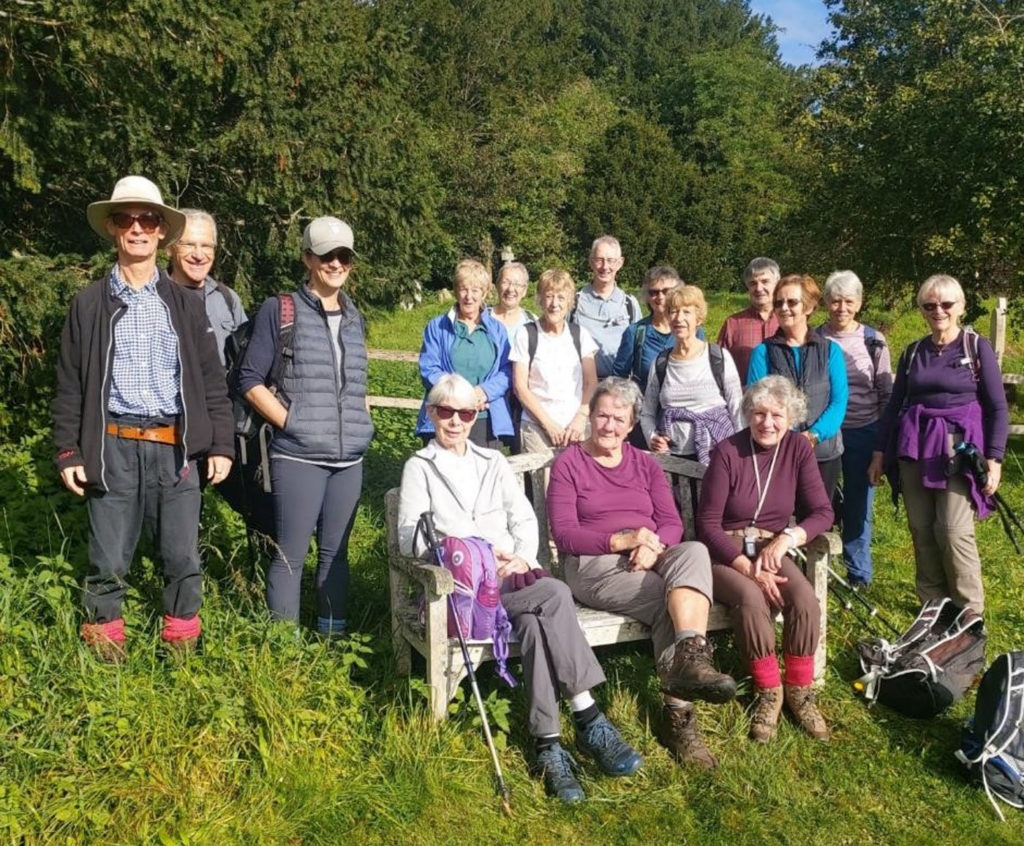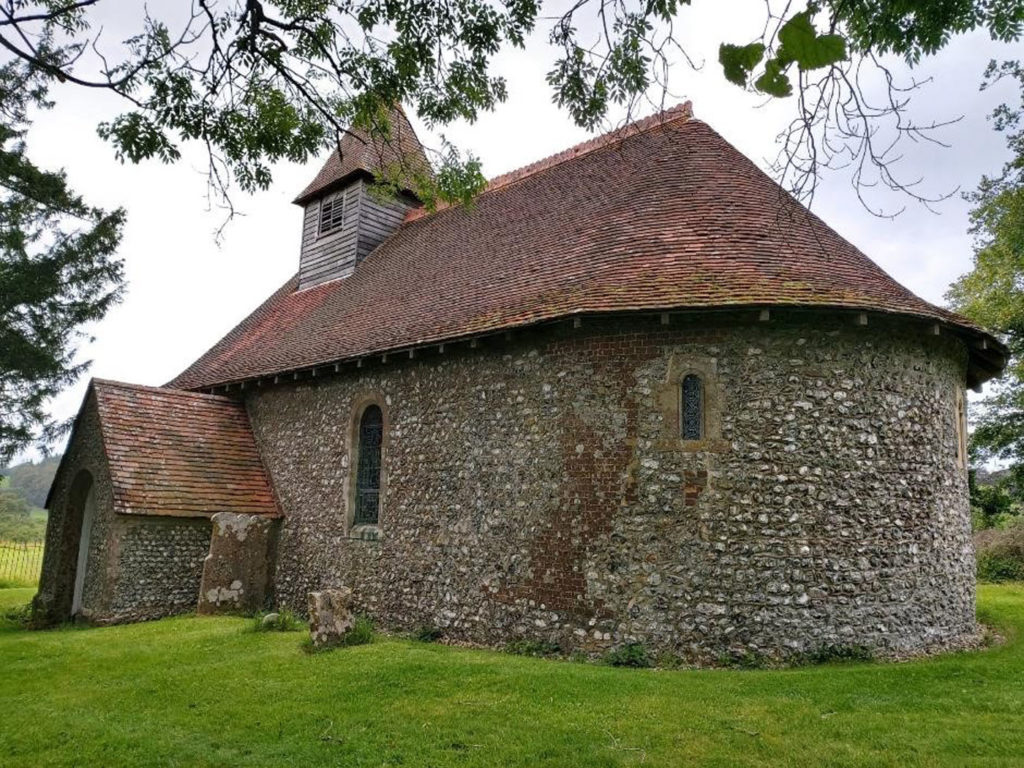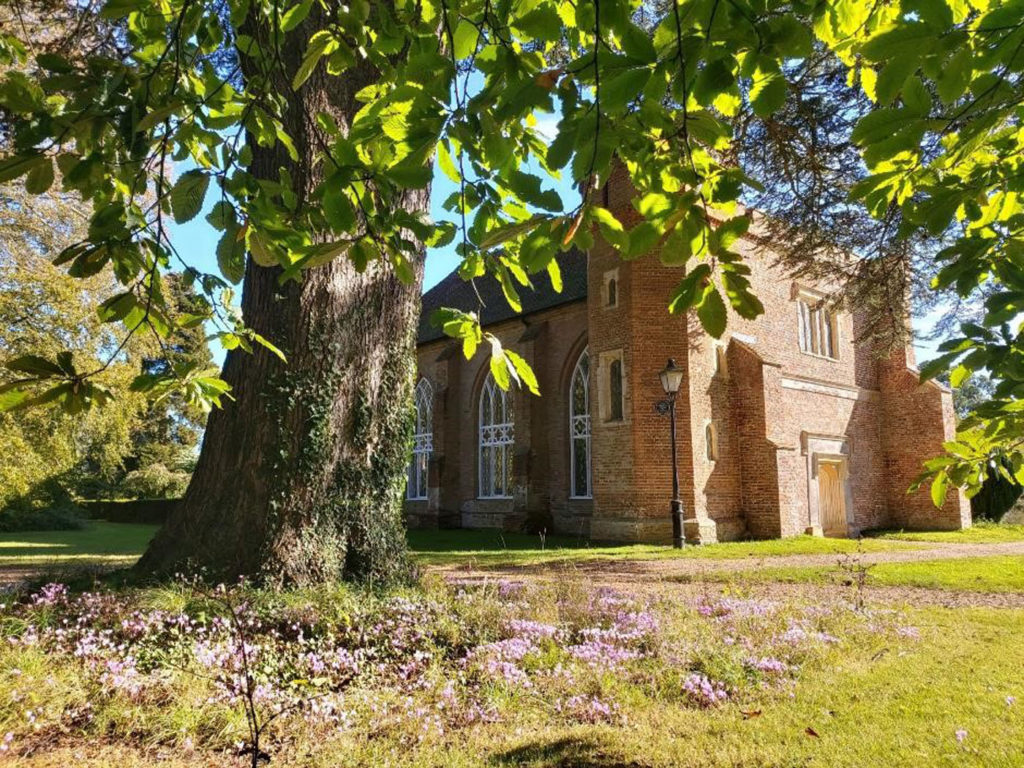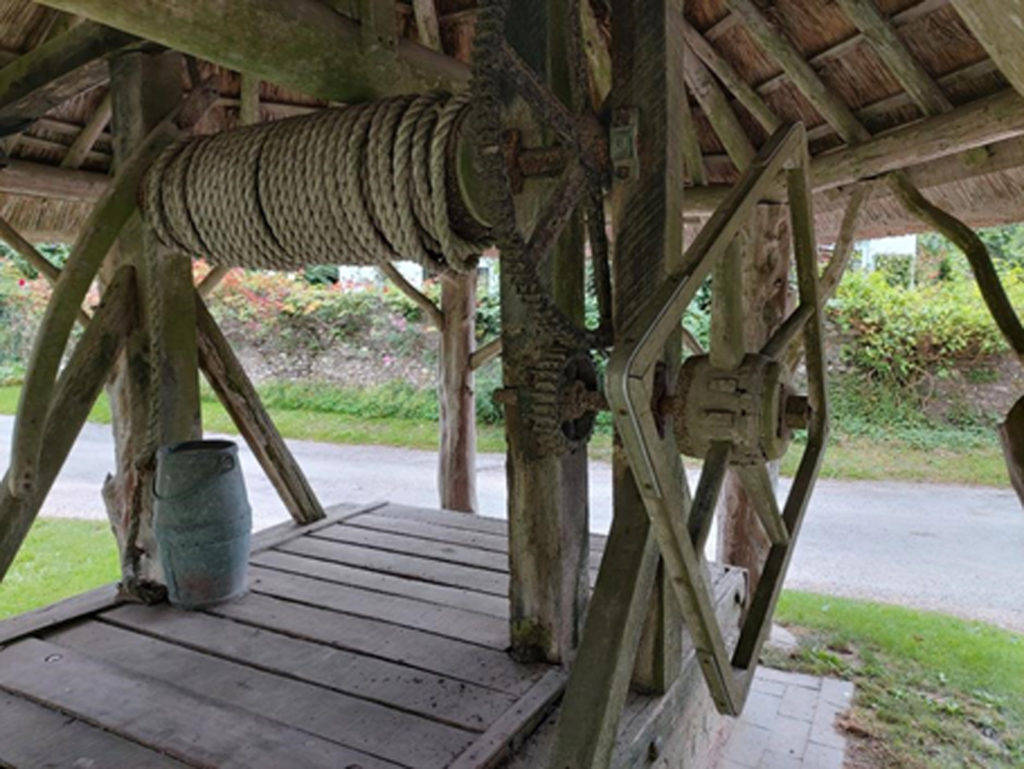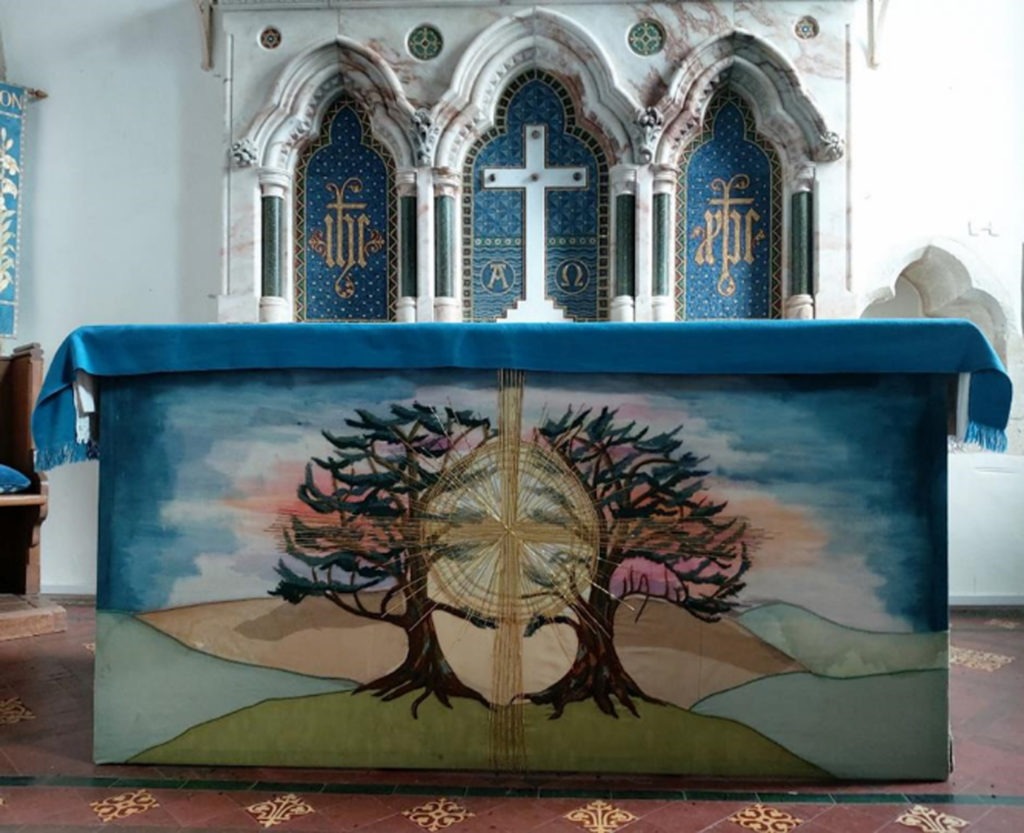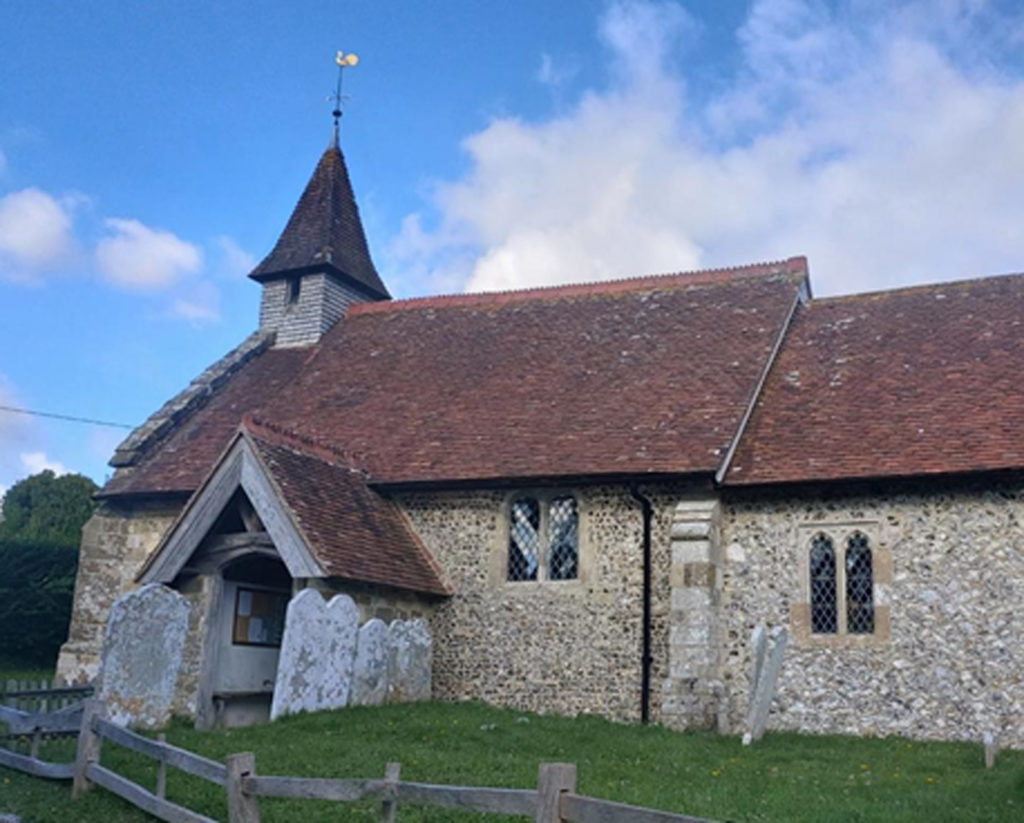- Octagon Way: 6 & 13 October 2021
- Walk Leader: Sandy
- Distance: 11 miles 1st day, 9 miles 2nd day
- Start: 09:30 at Petersfield Station for taxi pick-up both days
Many months back Petersfield Ramblers decided to walk the Octagon Way but, with so many of us taking hiking holidays through the summer, it was October before we could execute our plans. Nonetheless we struck lucky with the weather for our two-day walk, enjoying perfect autumnal days of warm sunshine and clear blue skies.
The Octagon Way is an 18-mile circular walk around the Octagon Parish in West Sussex, designed in celebration of the Queen’s Diamond Jubilee. The Octagon Parish is made up of ten villages, eight of which have charming churches originating from the 12th century. The Walk links the villages, providing fine views down to the south coast across rolling downland.
We decided to split the 18 miles into two more doable parts. North Marden in the northeast became our starting point for both parts, with Stansted in the southwest being the end point – giving access to Rowlands Castle station for a train journey home. Our plan was to walk anti-clockwise the first day – via Up Marden, Compton and West Marden – and clockwise the second day through East Marden, Stoughton, Walderton and Racton.
So it was that we gathered at Petersfield and Liss stations in cheery mood one sunny October morning, to await our pre-booked transport. Thanks to a good service from A2B taxis, by 10am we were all gathered in North Marden, ready for our adventure – which commenced with a look at North Marden’s tiny, flint church. Despite the charms of all the other Octagon churches that we progressively admired along the way, we all agreed that this first ecclesiastical building was our favourite. It was enchanting for its simplicity – both inside and out – and the unusual rounded east end.
With one church ticked off our list, the walking began in earnest. After a couple of miles over rolling downland we climbed to Up Marden – which comprises solely a lovely 13th century church, tucked away in trees. Stopping in the churchyard for coffee and a peep at St Michael’s, we admired the plain, unrestored interior with its pale hints of wall paintings.
From here we climbed over Telegraph Hill – noting the laden sloe bushes in the hedgerows – to the village of Compton. Before halting for lunch, a visit to the church was in order; largely rebuilt in 1849, we found the more cluttered interior less to our liking. But nothing could dampen our spirits, knowing that Compton Tearooms awaited us! The Tearooms – as ever – provided tasty fare in generous portions, from yummy cakes to packed sandwiches.
Weighed down with food we set off again for the next leg of our expedition, across recently harvested fields and along the edge of West Hanger Wood to little West Marden. Lacking a church, we didn’t stop, instead continuing on for two more miles – passing through conservation woodland to the impressive Stansted House.
A circuit of the Octagon Way wouldn’t be complete without a visit to Stansted’s St Paul’s Chapel – one of the eight Octagon Parish churches. Not normally open to the public, the Stansted Estate were immediately welcoming when asked if we Ramblers could take a look inside the chapel. Indeed, they not only supplied tea, coffee and biscuits but also a brilliantly informative volunteer guide – Michael Olding. As we rested our weary legs in the pews, Michael provided a fascinating history of the chapel which is believed to have been the banqueting hall for the original manor house that pre-dated Stansted House.
Leaving the Octagon Way, a two mile walk due west away from Stansted took us to Rowlands Castle station and a train home.
Part two of our circuit a week later started in a similar vein to part one: taxis to North Marden. This time we walked away from the village in the opposite direction, once again blessed with sunshine. After a while on a small country road, we turned into a narrow strip of woodland then crossed fields to reach East Marden.
Here we observed St Peter’s early 13th century church: a long rectangle, again built of flint. Inside we found the first of a number of intricate pieces of needlework displayed in the more southerly churches, including a marvellous whirling, colourful applique altar cloth. Of further interest in East Marden was the 200ft thatched well with its unusual square winding wheel, the only source of water until 1924.
From East Marden it was on to Stoughton, two miles south, and early lunch at the picturesque Hare and Hounds pub. Refreshed, we sauntered down to St Mary’s church with its rather imposing façade and paths paved with old gravestones. Inside was more remarkable needlecraft: an impressive tree and downland inspired altar cloth; a long tapestry runner illustrating local history; and the most beautifully stitched rainbow, themed on the covid pandemic.
Next stop Walderton (no church) and then on to Racton, involving some single-file road walking. Here our final church did not disappoint. A modest building beside a chocolate-box thatched cottage, the inside excelled with curiosities, from tombs and monuments along the north wall, to the bright stained glass behind the altar, commemorating the fallen of World War 2.
Retracing our steps, we returned to the footpath leading up to Racton Ruin, an 80 foot tall folly built in 1772 by the Earl of Halifax. Levelling out, the shaded path took us on to Stansted, joining up our end points from part one and part two. The Octagon Way had been completed. To celebrate this achievement – and the birthday of one of our members – we ate cake, kindly baked (and carried!) by two of our ladies. It just remained for our tired but contented group to trek back to Rowlands Castle and – for a second time – wait on the platform for 45 minutes for a train home. Yet despite two long days walking a total of 22 miles together, the chatter continued unabated: no one seemed in a hurry to end our fascinating adventure.
Author: Sandy Arpino

